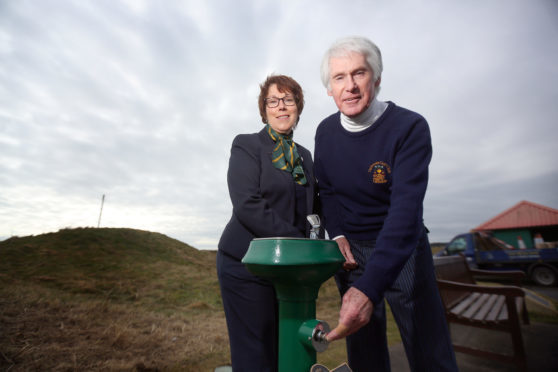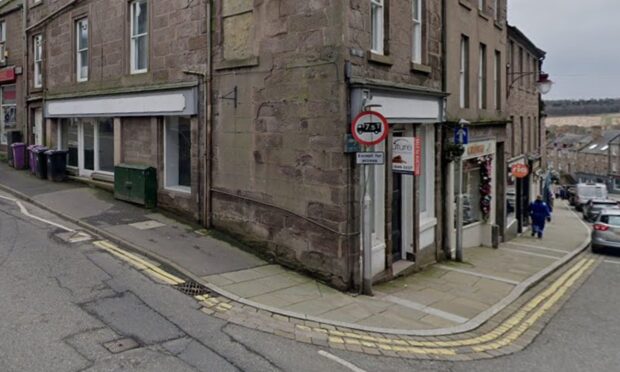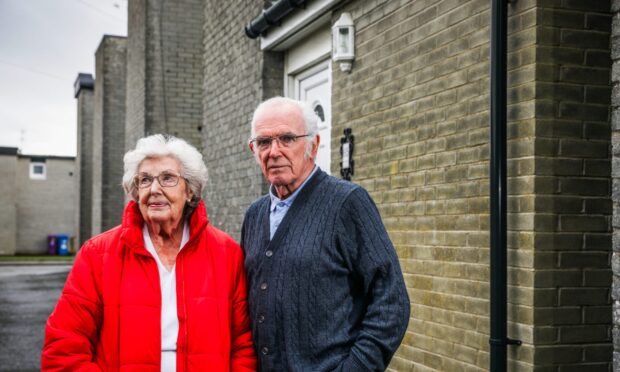Dalhousie Golf Club’s legacy has been etched into the very fabric of Carnoustie’s Championship course.
An engraved water feature was installed on the 16th tee to mark the club’s 150th anniversary.
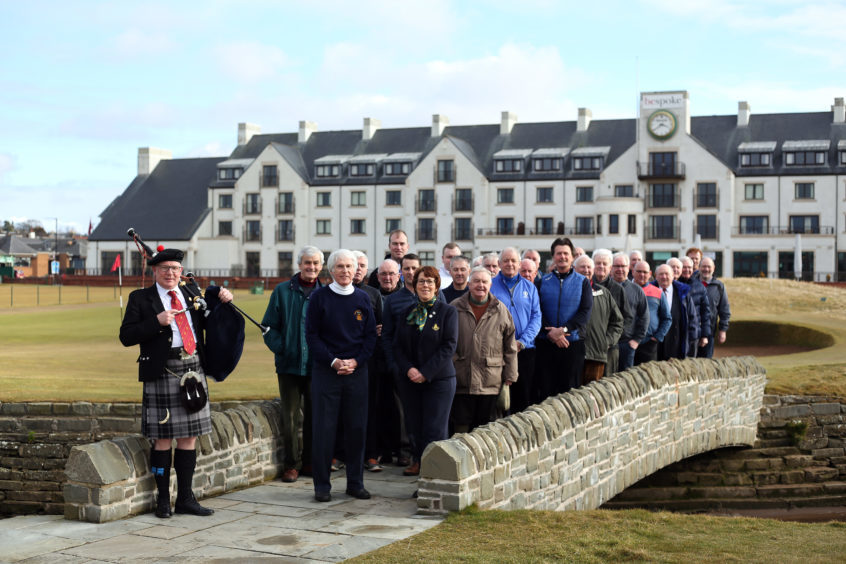
The unveiling happened prior to a special tournament to mark the anniversary of the inaugural meeting of the 20 original members who formed the club in 1868.
Tuesday’s tournament was the first of a six-month series of events which have been organised by Dalhousie Council to celebrate the anniversary.
The courses at Carnoustie are laid out on land largely acquired from the Earls of Panmure and Dalhousie and, in lesser measure, from Carnoustie House Estate.
As membership of the new club grew rapidly in the early months of 1868, the promoters wrote to Lord Dalhousie for permission to play golf on Carnoustie Links and choose an adjacent site for the clubhouse.
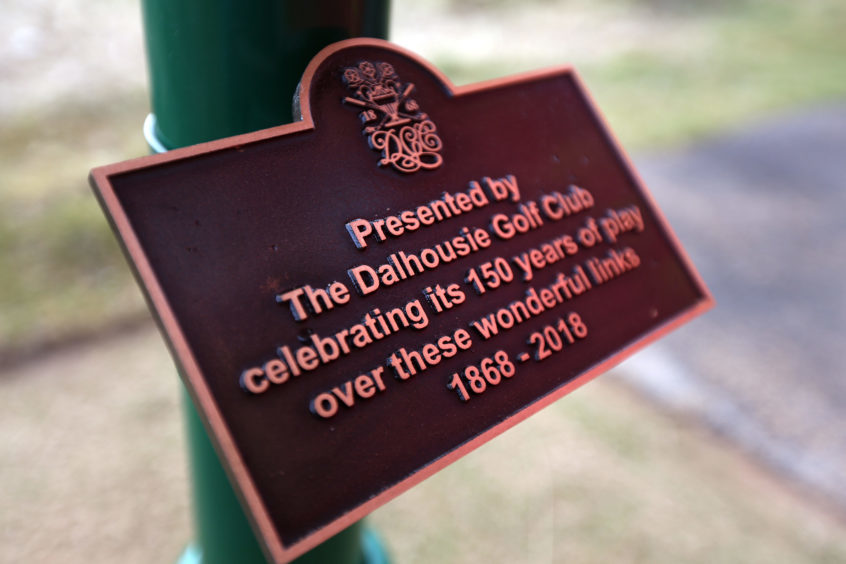
From the date of Lord Dalhousie’s approval to the present day, successive Earls of Dalhousie have held the title of Patron of the Club.
Captain Donald Ford said: “The club has been fundamental in the organisation of golf across the links and I think that is the aspect of which members are so proud.
“Although we’re a small golf club our history is exceptional. We led the way in greenkeeping and clubmaking and golf in the town hugely benefited because of that.
“The club was a founder sponsor of The Amateur Championship and a succession of our members have played a huge part in the development of the courses in Carnoustie, since Old Tom Morris was invited to upgrade the links in 1872.
“In 1930, James Wright, the then-Captain of the Dalhousie Club, proposed further changes to Carnoustie’s four closing holes – now recognised as the hardest finish in Open golf.
“Wright was a chartered accountant, with no design knowledge at all, yet (in only six months) he changed the face of the course forever.”
Mr Ford said The Open returning to Carnoustie in July will make the 150th anniversary celebrations extra special.
He said the anniversary was “tinged with sadness” because Dalhousie no longer has a clubhouse following a saga which eventually led to one of the cornerstones of Carnoustie golf being demolished to make way, eventually, for apartment blocks.
The club Council was approached by a group of businessmen seeking to develop the site by expanding the clubhouse and creating accommodation. In 1990, members vacated the premises “on a temporary basis” until the new developments were completed.
The original Dalhousie site plans fell through, however, and the handsome red sandstone building was razed to the ground in 1998. The club had experienced a nomadic eight years, but ultimately settled into its new home at the Carnoustie Golf Hotel – in time for the 1999 Open.
Mr Ford said the principal golfing event as part of the anniversary is on August 24, when around 60 to 70 guests will attend a tournament on the Championship Course and formal dinner.
Other events include the publication of a book on the history of the club, a race night and a new sesquicentenary trophy struck for competition among the membership.
Key dates in Dalhousie’s illustrious history
1868 – The inaugural membership advises the local clubs and golfers that Dalhousie would take charge of the maintenance of the links. The first clubhouse is also built – at a cost of £600.
1872 – Old Tom Morris is invited to inspect the course and agrees to convert it from 10 holes to the first 18 hole course in the town – the first major step towards the formation of the present Championship Course.
1883 – Dalhousie Council appoints Robert Simpson, from Earlsferry, as clubmaker and greens superintendent. Robert was accompanied to Carnoustie by two of his brothers, Archie and Jack, and the three were soon making the name of the town stand out in competitive golf. They inspired scores of locals to imitate “the Carnoustie swing” which was to be exported to many parts of the world as they headed off to America, South Africa and Australia to teach golf as professionals – securing Carnoustie’s vital pioneering role in world-wide golf.
1886 – Dalhousie gets together with another twenty five clubs from across the UK and founds the British Amateur Championship, which is still going strong today.
1926 – James Wright, the then Captain of the Dalhousie Club, persuades the local golfing community that James Braid should be invited to examine and advise on the upgrading of the Championship Course – a vital point in Carnoustie’s development as one of the greatest courses in the world.
1930 – Following criticism by competitors at the Scottish Amateur Championship that the finish was “too easy”, Wright himself proposes further changes, which made Carnoustie’s four closing holes among the toughest and most respected anywhere. It was timed to perfection, as the first Carnoustie Open Championship took place in 1931 – and was won by Edinburgh-born US citizen Tommy Armour.
